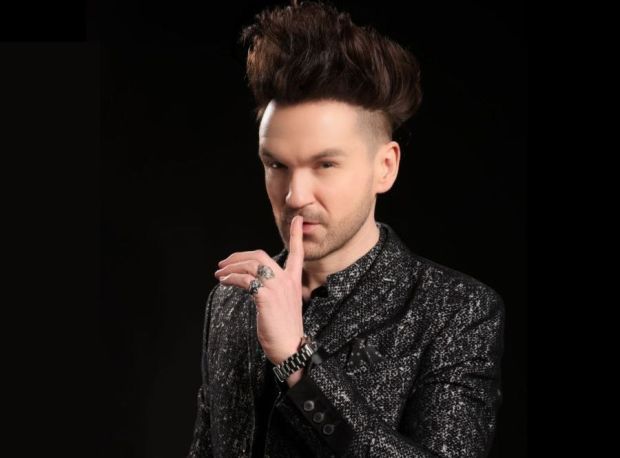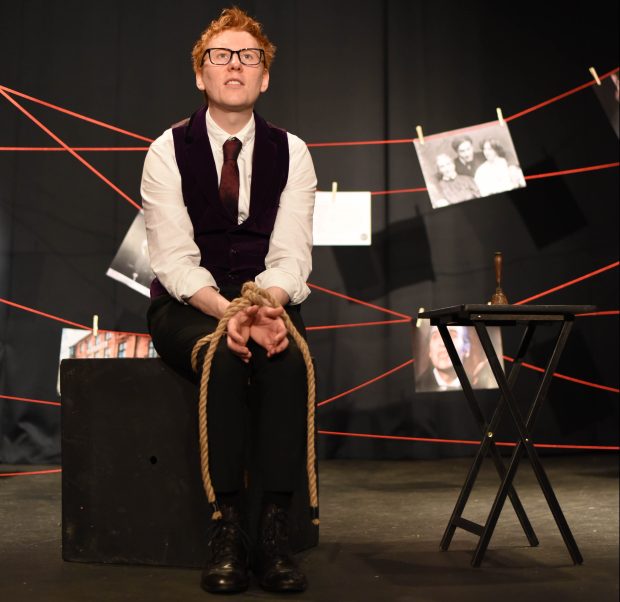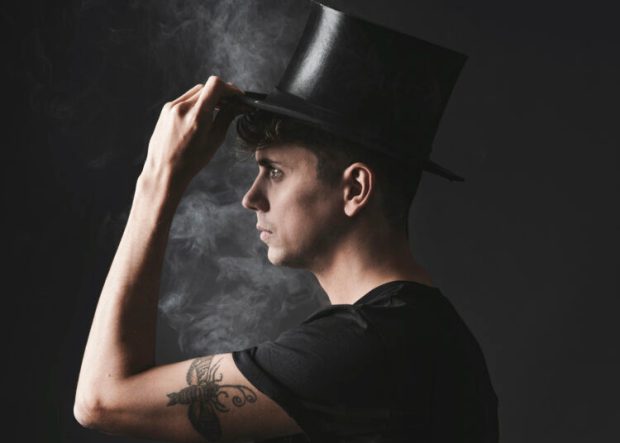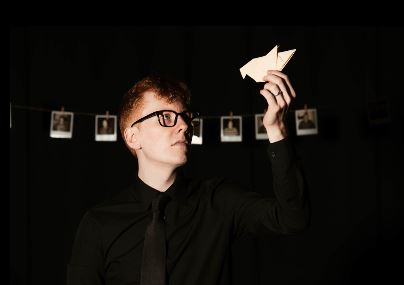☆☆☆☆☆
Chris Cook has been a Fringe institution for a full decade, and celebrated this milestone with a one night only show Arrows in his home, the Voodoo Rooms. Arrows contained all the classic Cookery his fans have come to love, but as much as it’s a celebration of Cook’s full body of work, as the title suggests there’s one stunt effect in particular that’s highlighted as exceptional. It was both a celebration and genuine entertainment from a superstar performer, and for one Monday evening in August it was the place to be in Edinburgh.
Arrows was as much a personal celebration for Cook as it was a show for the audience, which came through in several ways that only made the whole event more enjoyable. The audience itself was fantastic, with the majority consisting of personal friends and family or fans who were all immediately 100% behind everything that Cook said and did onstage. Cook even invited his girlfriend to join him onstage for an adorable final segment, and she briefly upstaged him with her perfect comic timing, getting one of the biggest laughs of the evening.
The magic involved was mostly familiar favorites, cleverly put together to form a cohesive theme around the titular arrow sequence. The jazz magic style of the first few tricks seamlessly blended with the more structured arrow-based second half. A highlight was a card corner trick that Cook performed with one of the Voodoo Rooms staff, who seemed incredibly excited to be included onstage.
However, the main point of the show was the arrow bits themselves. Cook had performed this neoclassical take on a bullet catch in a few previous Fringes and it’s a fan favorite—it retains the show of physical invulnerability from Cook, the magician, but shares this experience with an audience participant, and adds an aspirational element that is focused on Cook and his participant but that the entire audience can get involved in. It’s intended as a challenge to the audience to take concrete steps towards following their dreams, but of course art is always open to interpretation. It can equally have an effect on audience members who have just taken a big step towards following a lifelong dream, and come in to the show doubting if they’ve made the correct decision. Watching a charismatic man in a stylish outfit do an impossible thing and then say it’s worthwhile to follow your dreams can be oddly comforting, and a great reminder to those who are already living out a childhood dream of how lucky they are to have been able to do so.
Arrows was the perfect celebration of Cook’s first ten years of Fringe performing. Here’s to many more.









